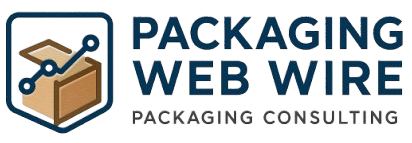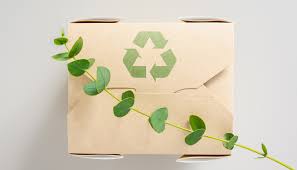Introduction: A New Era in Packaging
In an age where presentation matters just as much as the product itself, non-corrugated boxes are experiencing a renaissance. Sleek, stylish, and customizable, these boxes are rapidly becoming the go-to solution for brands across industries from cosmetics and electronics to gourmet foods and luxury gifts.
According to market forecasts, the global non-corrugated boxes market is projected to grow from USD 72.37 billion in 2025 to USD 138.74 billion by 2034, expanding at a robust CAGR of 7.5%. But what’s driving this dramatic surge? From aesthetic appeal and cost-efficiency to sustainability and AI-driven innovation, this article explores the dynamic forces reshaping the non-corrugated packaging landscape.
Invest in Our Premium Strategic Solution: https://www.towardspackaging.com/download-sample/5230
1. Market Snapshot: Momentum Builds Toward 2034
The non-corrugated boxes market is carving out a substantial niche within the global packaging industry. In 2024, Asia Pacific emerged as the dominant region, capitalizing on booming e-commerce, increased consumer spending, and rapid urbanization. The telescopic box segment led product sales, favored for its versatility and structural simplicity, while boxes with a thickness between 1.5mm to 2.5mm proved most popular among manufacturers.
The consumer electronics sector is expected to register the fastest growth, driven by the need for stylish yet lightweight packaging that enhances the customer experience without compromising product integrity.
Request a personalized case study designed around your business goals and gain strategic insights into the global packaging industry. Connect with us at: sales@towardspackaging.com
2. What Are Non-Corrugated Boxes? A Lightweight Revolution
Unlike corrugated boxes, non-corrugated boxes lack the inner fluted layer, making them lighter, more compact, and cost-effective. Made from materials like paperboard, plastic, and cardboard, these boxes are ideal for packaging where aesthetics, not brute strength, are the priority. They’re widely used in:
-
Cosmetic and beauty products
-
Luxury gift hampers
-
Consumer electronics
-
Food and confectionery packaging
Despite offering less protection than corrugated counterparts, their ease of customization, lower production costs, and premium look make them highly appealing in today’s design-conscious market.
3. Key Growth Drivers: Design, Digitalization & Demand
A. The Rise of Aesthetic & Premium Packaging
Today’s consumers are more likely to share a product online if it’s beautifully packaged. Platforms like Instagram and TikTok have elevated the unboxing experience into a marketing opportunity, compelling brands to invest in high-end packaging. Non-corrugated boxes—with their sleek designs and printable surfaces—are perfect for:
-
High-resolution branding
-
Embossed logos
-
Laminated and matte finishes
These features boost shelf appeal and encourage brand loyalty through a memorable first impression.
B. Regulatory & Government Support
Policy changes like India’s reduction of GST on carton boxes from 18% to 12% in July 2024 offer a financial tailwind for manufacturers. These measures aim to support the print-packaging sector, encouraging the use of both corrugated and non-corrugated paper-based solutions.
C. Smart Partnerships and Inorganic Growth
Leading beauty brands are forming strategic alliances to capitalize on the premium packaging trend. For example, in May 2024, Sally Hansen partnered with LoveShackFancy and Huhtamäki Oyj to launch a floral-themed, teenage-targeted nail polish packaging line. These partnerships highlight the increasing relevance of exclusive, artistically designed non-corrugated boxes.
4. AI & Automation: Redefining Packaging Efficiency
Artificial Intelligence is injecting intelligence and efficiency into packaging design and production. Here’s how:
-
Design Optimization: AI tools can simulate different structural designs for maximum strength using minimum material.
-
Predictive Maintenance: Machine learning reduces downtime by anticipating equipment failures.
-
Smart Quality Control: Computer vision ensures boxes meet high-quality standards by identifying defects invisible to the human eye.
-
Consumer Insights: AI-powered analytics decode customer behavior to help brands design packaging that resonates with their target market.
-
Automation: Robotic systems can now cut, fold, glue, and assemble boxes faster and with greater precision.
These innovations are transforming traditional packaging lines into smart, efficient ecosystems.
5. Opportunities Ahead: Gift Packaging & Custom Solutions
With personalization at an all-time high, custom gift packaging is emerging as a booming sub-sector. Brands are turning to non-corrugated boxes for:
-
Branded festival gift hampers
-
Bespoke subscription boxes
-
Limited-edition product launches
In July 2024, Rakhibazaar, an online Rakhi store, launched a premium Rakhi gift hamper collection that included diverse customizations—from kids’ hampers to traditional sets—demonstrating how cultural moments can fuel packaging innovation.
6. Market Constraints: Cost & Competitive Pressure
Despite their advantages, non-corrugated boxes face significant challenges:
-
High manufacturing costs, especially for rigid or specialty materials.
-
Less protection during transport, limiting use in heavy-duty logistics.
-
Environmental limitations, as not all non-corrugated materials are easily recyclable.
-
Strong competition from flexible and biodegradable packaging options.
-
Market saturation in mature economies.
These constraints require strategic innovation and differentiation to maintain growth momentum.
7. Sustainability: Meeting the Green Mandate
Consumers are demanding eco-conscious packaging, and non-corrugated boxes are adapting:
-
Use of recyclable paperboard and biodegradable inks
-
Lightweight structures to reduce shipping emissions
-
Simplified designs to minimize waste
Sustainable innovation is becoming a core differentiator as brands align with ESG goals and circular economy practices.
Conclusion: The Future Is (Non)Corrugated
From luxury cosmetics to seasonal gift hampers, non-corrugated boxes are no longer just a budget alternative—they’re a branding powerhouse. As trends shift toward personalization, aesthetics, and eco-friendliness, this lightweight packaging option is poised to dominate the retail and consumer goods landscape through 2034. Brands that embrace smart design, digital tools, and customer-centric strategies will not only meet market expectations—they’ll set the standard.
Source: https://www.towardspackaging.com/insights/non-corrugated-boxes-market-sizing
Get the latest insights on packaging industry segmentation with our Annual Membership – https://www.towardspackaging.com/get-an-annual-membership
About Us
Towards Packaging is a leading global consulting firm specializing in providing comprehensive and strategic research solutions. With a highly skilled and experienced consultant team, we offer a wide range of services designed to empower businesses with valuable insights and actionable recommendations. We stay abreast of the latest industry trends and emerging markets to provide our clients with an unrivalled understanding of their respective sectors. We adhere to rigorous research methodologies, combining primary and secondary research to ensure accuracy and reliability. Our data-driven approach and advanced analytics enable us to unearth actionable insights and make informed recommendations. We are committed to delivering excellence in all our endeavours. Our dedication to quality and continuous improvement has earned us the trust and loyalty of clients worldwide.
Browse our Brand-New Journal:
Towards Healthcare: https://www.towardshealthcare.com
Towards Automotive: https://www.towardsautomotive.com
For Latest Update Follow Us: https://www.linkedin.com/company/towards-packaging/
Get Our Freshly Printed Chronicle: https://www.packagingwebwire.com/


